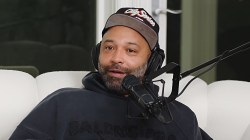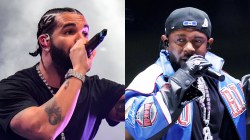The origins of the term “Gangster Rap” are examined in “Who Invented The Term ‘Gangsta Rap’? It’s Complicated,” an L.A. Weekly story.
The article cites a 1989 article on N.W.A Robert Hilburn wrote in the Los Angeles Times. In his article, Hilburn also discussed Ice T.
“Ice-T, who helped popularize the L.A. gangster rap image, was the evening’s headliner and he is a more polished performer and writer than the members of N.W.A.,” Hilburn wrote in his 1989 article.
The L.A. Weekly story says that a Lexis-Nexis search it conducted says that Hilburn’s 1989 Los Angeles Times article was the first time “gangster rap” or “gangsta rap” was used in print.

AD LOADING...
Although Gangster Rap’s creation is often tied to rappers from Los Angeles, as is the case in the L.A. Weekly article, several East Coast acts, including Philadelphia’s Schoolly D and New York’s Just-Ice and Boogie Down Productions, referred to themselves as gangsters in their music, rapped about gangster activities and/or took pictures with guns before West Coast artists did.
Schoolly D, for instance, released his “Gangster Boogie” single in 1984, and rapped in explicit terms about guns, drugs, gangs, sex, violence and being a gangster before rappers in the Los Angeles area did. Thus, Schoolly D is considered by many as the creator of Gangster Rap.
Furthermore, Ice T has said in numerous interviews that his landmark 1986 gangster rap single “6 In The Mornin’” was his attempt at making a West Coast version of Schoolly D’s 1985 single “P.S.K. What Does It Mean?”
For his part, Just-Ice released in 1986 a song called “Gangster Of Hip Hop.”

AD LOADING...
N.W.A’s early forays into what would later be dubbed “gangster rap” are 1987’s “Dope Man” and “8-Ball,” as well as Eazy-E’s “The Boyz-N-The Hood,” which was released as a single in 1987.

AD LOADING...



